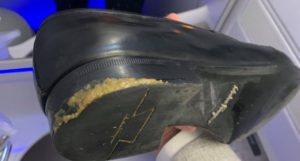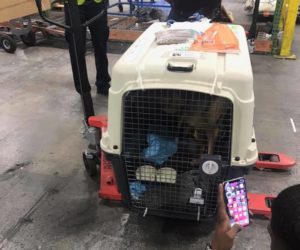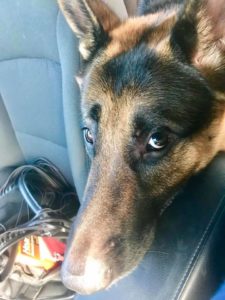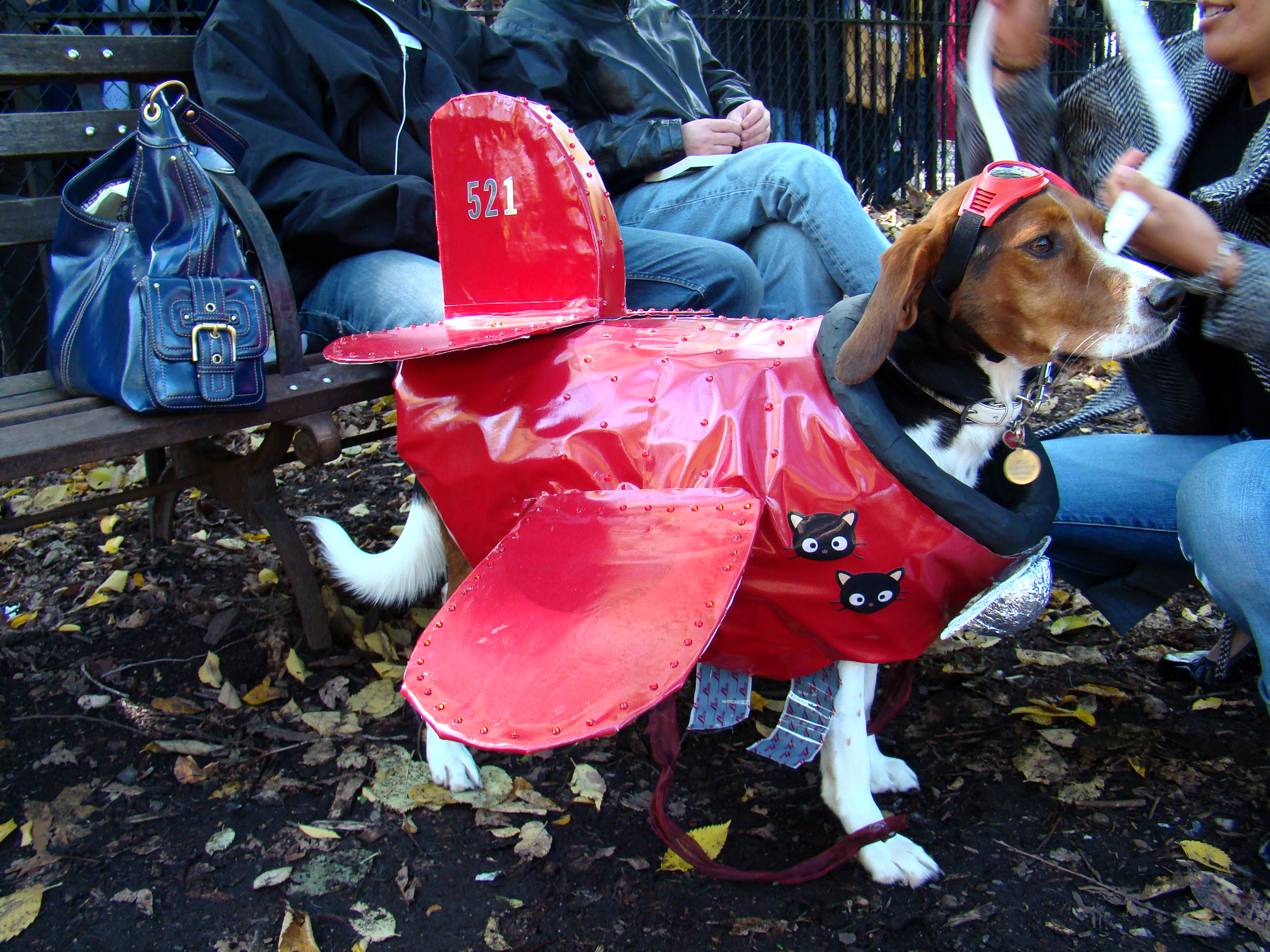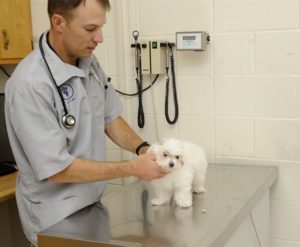There may be several things you’re looking for in a new pet. Some people need a hypoallergenic pet. Some people are looking for a pet of a certain size and temperament. Some people need a pet that will get along with other animals. Some people prefer the convenience of a one-year-old dog straight out of obedience school. Others wouldn’t dream of missing out on the cuteness and fiercely loyal bond of having a young kitten or puppy around the house. So, while there are a lot of pets out there waiting to be adopted, this doesn’t mean you can find the right pet for your family at just any animal shelter or pet store. Finding the perfect pet may require expanding the search beyond your immediate area.
Ingrid Boveda, a resident of Salt Lake City, found her perfect pet 1,300 miles away at an animal shelter in the small town of Houston, Missouri. Ingrid was looking for a pet that had a similar look and temperament as her other dog, a sweet but aging Shar Pei Lab named Hooch. She recalls it was her twin brother who first turned her on to the charms of the Shar Pei Lab: “The first thing I noticed was the unique combination of facial features, but what drew me to them the most was Hooch’s personality. Hooch was very mellow (even though he was just barely an adult dog) and exceptionally sweet.” When Ingrid eventually inherited Hooch from her brother, she grew even fonder of the dog. “He had his own little spin on all the typical things dogs did. For example, he wouldn’t chew or tear up my house. He’d just ‘redecorate,’ or move certain household items from one area to another, usually in protest of not getting enough attention.”

Turner has been settling into his new home quite nicely since landing in Salt Lake City.
Be Diligent in Researching the Pet Organization
The idea for getting a new pet came about naturally enough. “Hooch is getting older,” Ingrid explains, “and although still sweet and mellow, he’s starting to decline in terms of health. I then happened to google ‘Shar Pei lab’ because it never occurred to me to wonder whether Hooch looked like the ‘typical’ Shar Pei lab. I came upon Turner (then Luke), another Shar Pei lab waiting for his forever home in a nonprofit shelter in Missouri.”
While finding Turner came about easily enough, the actual decision and adoption plan were a little more involved. She had recently moved in with her boyfriend Paul. “The tradeoff to looking far and wide for the dog is that you often don’t get to meet them before adopting them, so in that case, Paul and I had chatted on the phone with Turner’s shelter and asked about his temperament, potential problem behaviors, health, and why he was at the shelter.”
More than just asking after the pet, Ingrid learned that “some breeder websites are actually scams where you never actually get a dog, and that’s pretty sad, so maybe in those cases I would go with a more local-ish breeder where I can see the puppies as well as their paperwork.”
Get a Referral—and Health Travel Certification—from the Pet Source
Whether it’s an animal shelter or breeder, once you’ve done your research, it’s good to know that, before getting on a plane, your pet will be directed examined by a veterinary professional who knows the animal’s history. The shelter or breeder may also have local connections for animal delivery services that you can use.
There is also likely to be a network of vets and animal delivery services with which the shelter or breeder has a relationship. “The shelter in Houston had recommended the pet delivery service that we chose. The choice seemed more driven by what was available in the area and when they would be able to transport Turner.”
These local connections can be especially helpful when the pet might otherwise be restricted from air travel. For example, because Turner is part Shar Pei, he is considered a “snub-nosed” dog and required specific temperatures to fly safely. “This certainly presents an added inconvenience when compared to getting a dog locally,” Boveda allows, “though we also knew that Turner was up for adoption and there was no other Shar Pei lab locally that needed their forever home. So we waited a couple of weeks so that Turner could get his necessary medical clearing and for the weather to be just right.”

Turner hanging out with his new brother and purebred Shar Pei, Wiggles!
Do Your Homework, But Be Prepared to Take a Leap of Faith
In the end, Ingrid was more worried about her future with her new pet than the logistics of pet travel. “Paul and I were for sure antsy in the week to days leading up to Turner’s arrival. We talked a lot about how he might get along with Hooch, and shared our worries about the possibility that he was going to be a difficult dog, or just a dog that wasn’t compatible with our lifestyle. My nerves the day he arrived were more the nervous jitters and excitement of getting a new dog. I did wonder what it must be like for Turner to get put on a plane and being soon to meet his new parents. So I did feel this want to make sure he’d know as soon as he saw us that the journey was going to be worth it.” Ultimately, the pickup experience was joyous and uneventful. It helps that even amidst construction at the SLC International Airport, there’s clear signage indicating the turnoff at 3700 W for the airport cargo facility area.
When asked to reflect on what she learned from the experience, Ingrid suggests being patient and looking outside the county or even the state. “This is one of those longer term commitments that affects your travel and social plans…so it pays to wait for the right dog. Turner was sort of an impulsive decision and although we don’t regret it, we’ve reflected on it since and feel like the vetting (get it?) process shouldn’t be rushed.” Still, even after doing their homework, Ingrid confesses that she and Paul were scared they would adopt a disaster. It all turned out well in the end. “We’re happy to say that Turner, like his counterpart Hooch, is his own version of sweetness.”
